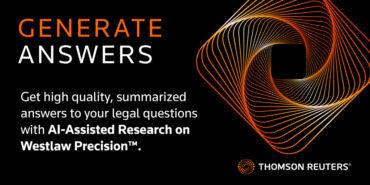Data took the legal world by storm, becoming necessary for sustaining a competitive advantage over other firms. Data itself has a plethora of capabilities that bring firms many opportunities to grow and improve. It’s used in legal practices to win cases and secure positive outcomes for clients. This is done through aggregating data on past, similar proceedings; about your opposing counsel and judge; and about the bandwidth a law firm has relative to taking on new casework.
Finding where data fits into your firm may be where the challenge comes in. The many data use cases can get overwhelming when you start to think about how to utilize them in your firm. To help you get started, let’s go over three ways to use data insights in your everyday legal practices.
Data on past, similar proceedings
The past is always informative when looking at how to approach the future. So, looking back at similar cases is certainly a good step to take when forming your own strategy. With firm access to data-driven insights, you can use data to be more efficient in your research process. Besides, going through every case manually is nearly impossible, so using data ensures you are able to find the most relevant cases and avoid leaving anything overlooked.
Gleaning insights from previous cases helps inspire how you begin to build your own case strategy.
Data about opposing counsel and judges
Data also helps you feel prepared by analyzing who you’re facing in the courtroom and learning about opposing counsel’s history when you prepare to go against them. By analyzing their track record, you may potentially identify a tendency to cite certain cases when supporting their points. When you know how your competitor approaches their cases, it may help you prepare for your own.
Similarly, using data to research judges’ histories helps to gain insight into any tendencies and understand what precedents your judge utilized in similar cases. Find out which cases your judge relied on for your issue and how often. When you know how a judge ruled in the past, you feel informed and better prepared when you walk into court.
This background knowledge of both your competitors and judges proves beneficial when you develop your own strategy. While outcomes can’t be predicted, at the very least you will be more informed.
Data about companies
In addition to data about opposing counsel and judges, having insight into all of the entities connected to a matter is of equal importance. Data can provide valuable information about a company’s typical litigation strategy and possible conflicts with existing clients, among other considerations.
In addition, data about companies can be helpful with business development across the firm. From expanding relationships with existing clients to targeting new ones, this kind of data can provide the insights you need to grow your firm’s business.
Get a competitive edge with data
There are many ways to use data in your firm beyond looking at past proceedings, competitors’ and judges’ histories, and your firm at large. Data has a place nearly everywhere. Learn more about how data and advanced legal research technology fits in at your firm.








